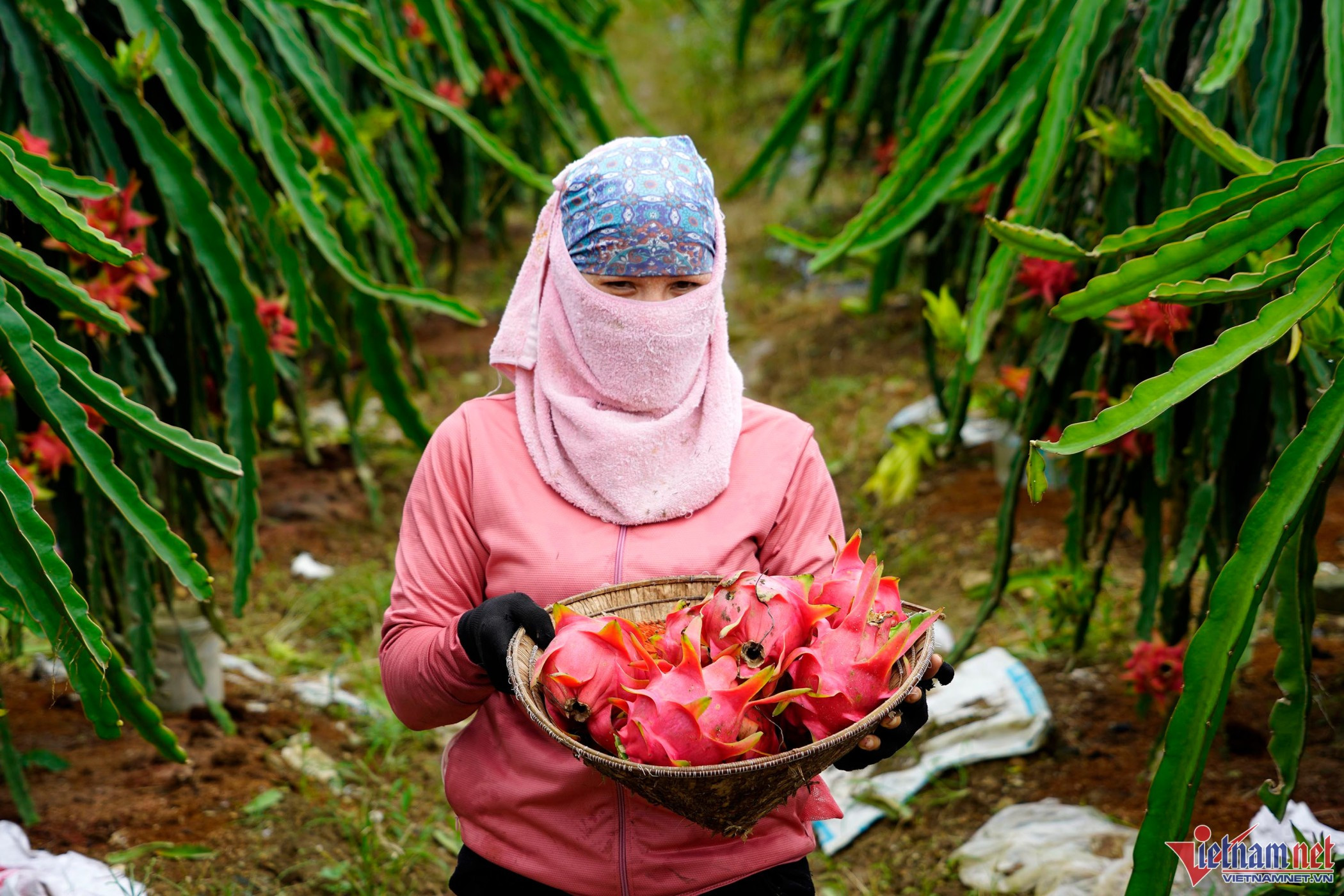
According to Sohu, the dragon fruit farming area in China has increased by 10 times over the last few years.
In 2021, the country had 67,000 hectares of dragon fruit which gave total output of 1.6 million tons. About 70 percent of Chinese dragon fruit is grown in Guangxi and Guangdong.
From 2016 to 2020, China’s dragon fruit yield increased from 1.24 tons to 1.54 tons per 667 sqm thanks to a growing area increase and technology application.
In Vietnam, dragon fruit is an advantageous crop. With the output of 1.4 million tons, dragon fruit is for both domestic consumption and export, bringing billions of dollars a year. China is the major export market which consumes 80-90 percent of Vietnam’s total export value of dragon fruit.
However, China is getting choosier. It has increased technical barriers, tightened cross-border imports and required high quality of products.
In late 2018, the Ministry of Agriculture and Rural Development (MARD) warned that China planned to develop 20,000 hectares of dragon fruit growing area in Guangxi and Hainan Island which would affect Vietnam’s dragon fruit exports. The country also decided to lease land in Laos and Cambodia to grow dragon fruit.
Vietnam’s dragon fruit exports to China have decreased in recent years. In 2019, dragon fruit exports brought turnover of $1.25 billion. The figure dropped to $1.12 billion in 2020.
In 2021, dragon fruit was officially excluded from the ‘club of $1 billion’ as it brought export turnover of $998 million only.
In 2022, dragon fruit export turnover was $632.6 million only, a decrease of 38.7 percent compared with 2021 and 49.3 percent compared with 2019.
This was partially attributed to China’s zero Covid policy under which imports were strictly examined.
Vietnam’s volume of dragon fruit exports to China is still good. Farmers can sell dragon fruit at high prices. In January, dragon fruit was collected at VND20,000-35,000 per kilogram, high enough to bring good profits.
However, consumption is unstable. Sometimes farmers have to call on consumers to ‘rescue’ them as dragon fruit goes unsold. When dragon fruit goes for good prices, farmers rush to grow the fruit, leading to a sharp rise in supply but then prices drop and they have to cut down plants the next year.
Diversifying products, markets
Dang Phuc Nguyen, secretary general of the Vietnam Veggie and Fruit Association, said Chinese dragon growing area and output have exceeded Vietnam’s, but in 2022 because of drought, the yield was seriously affected, while demand in the country increased.
“Dragon fruit exports to China won’t be affected in the immediate time,” he said.
Nguyen said Chinese like red skinned dragon fruit and Vietnam’s dragon fruit is favored because of better appearance. Chinese output is not high enough to satisfy domestic demand and the country still needs to import dragon fruit in large quantities.
However, Nguyen warned that Vietnam will face challenges in the long term as China is getting self sufficient. To retain the 1.4 billion consumer market, Vietnam needs to improve the quality of and develop a brand for the product.
He said it is necessary to diversify markets and process dragon fruit to increase added value. In China, there are many products processed from dragon fruit. Dragon fruit liquor, for example, is famous in China.
A director of a dragon fruit export company in Binh Thuan said that dragon exports to China of his company in 2022 fell by two-thirds compared with pre-Covid period.
In the first two months of 2023, exports were more favorable, but the company is seeking ways to penetrate new markets, including India and Europe, to minimize risks.
Do Thanh Hiep, director of Hoa Le Dragon Fruit Cooperative in Binh Thuan, said that diversifying markets and products will help stabilize dragon fruit prices.
With 200 hectares of dragon fruit farming area, members of the cooperative farm under many different standards to export products to the US, Japan, India, Dubai and the EU. Exports to China just account for a small proportion of the cooperative’s total output.
Tam An